
So you’re ready to start a photography business! Here’s everything you need to know to make those big entrepreneur dreams come true.
A quick note about this guide:
If you’re wondering just how to start a business in photography, this guide is all you’ll need to go from newbie to pro! Pace yourself—you can’t check every box in a weekend—and remember that building a long-lasting photography business is worth the wait!
The “Small Biz Owner” Mindset
Before you ever launch your website or take new clients, it’s critical that you hone your small photography business owner mindset. Success doesn’t happen overnight for most of us, and it’s the important decisions you make along the way that determine how far your photography business will go.
See how to earn money with ShootProof
The payoff is wonderful, but you must be ready to put in the effort necessary to nurture your photography business into a venture that pays off—financially and professionally.

Andrea Gallucci
How much will it cost to start a photography business?
And what’s a minimum viable business, anyway?
When you’re starting your photography business, you need to think smart with your time and money. The best way to do this is to offer enough services to attract new clients that allow you to grow as you go. This is known as a “minimum viable business” because you’re offering just what it takes to get specific clients interested, with plans to expand services as you gain experience.
Maybe you want to develop long-term relationships with your clients by shooting their engagement + wedding + maternity + family sessions. This is a wonderful goal, but it’s probably not feasible to juggle all those genres initially.
Instead, consider focusing on one or two genres and make a plan to grow slowly.
Working up to offering a full range of session types will allow you to get feedback from clients and make adjustments to your photography business as needed; your shooting, posing, and editing styles will evolve, and so will the photography business and brand decisions you make.
The real cost of starting your photography business involves money—and time!
There’s obviously a financial investment in launching a photography business. The exact amount depends upon what equipment and materials you already own.
Don’t underestimate how much time you’ll pour into this effort.
Does it surprise you to learn that running a successful photography business is usually 90 percent business and 10 percent actual photography?!
There will be office tasks related to your biz that you’ll enjoy and some that aren’t quite as fun (like preparing your taxes!). You’ll pick up a lot of skills along the way, in addition to making lovely photos! This will be a marathon, not a sprint, so dedicate yourself to learning along the way.
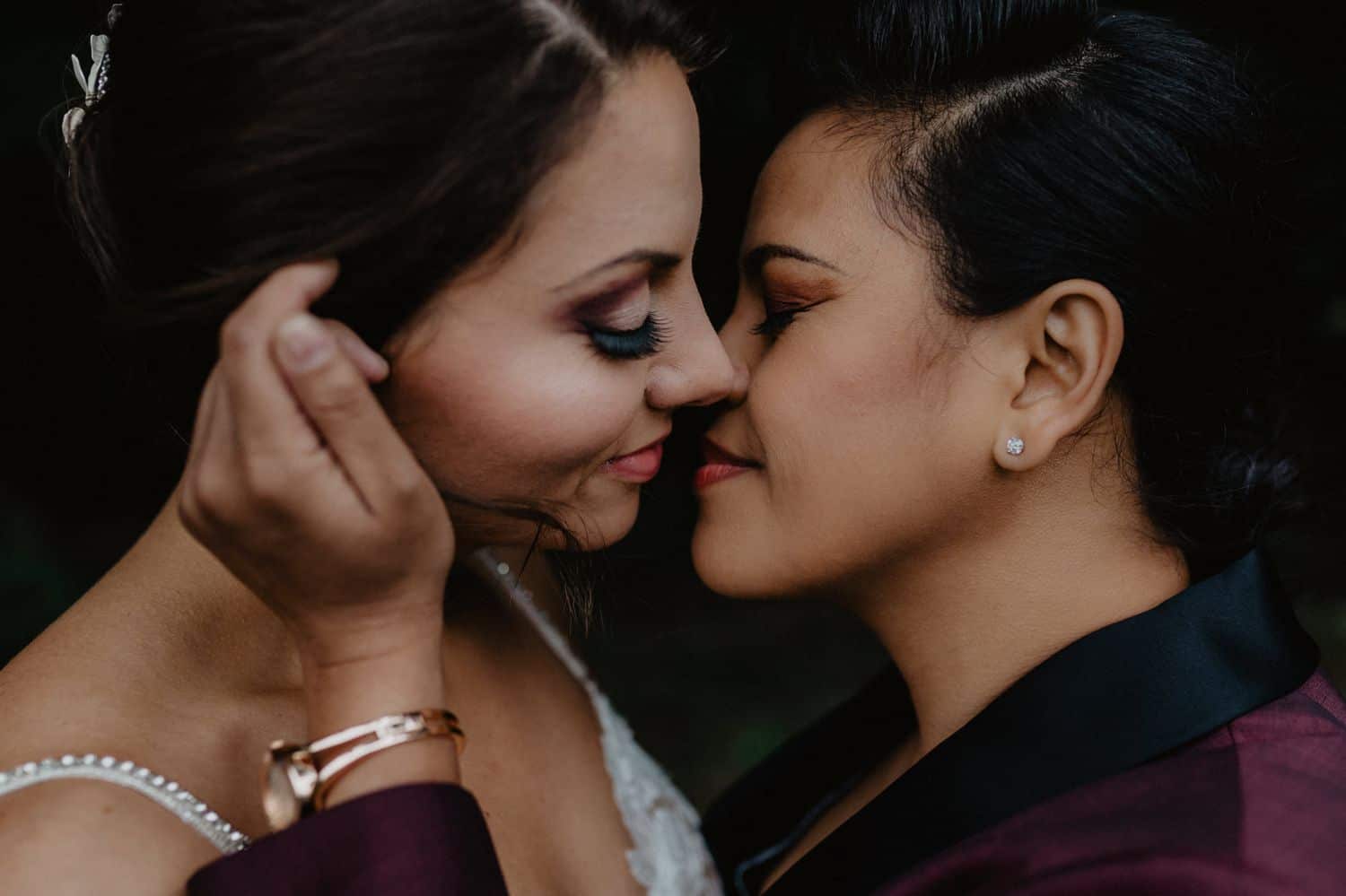
Nicole Nero Studio
Gear doesn’t make pretty pictures—you do!
Here’s a little secret: The lovely photographs that you see in magazines and on Instagram are not purely the result of an expensive camera or a top-of-the-line lens.
Those are simply tools that contribute to the final result.
The “secret sauce” behind beautiful images is all of the hard work the professional photographer has poured into her art. It takes years to not only build a solid photography business, but also acquire the posing skills, technical knowledge and ability to put your client at ease during a session (and all of that is really just the tip of the iceberg to running a successful photo biz!).
Before you spend hundreds, or even thousands, on gear, make sure it’s fully worth the investment. Many professional photographers use a crop sensor body before upgrading to a full-frame camera. Your kit lens or the “nifty 50″ 50mm is perfectly acceptable while you’re figuring out what kind of photography you want to pursue.
Once you blow people away with the photos you make on entry-level gear, just think of the magic that will happen when you upgrade! When photography is relatively new, it’s tough to know which camera and lens is best for you and your style.
Empower your clients with gorgeous galleries.
Make it legal: the importance of contracts, model releases, and pandemic waivers.
Talking about making your photography business legal feels like a snore when you’d rather be taking pretty photos! Unfortunately, this is a critical part of life as a photography business owner—you cannot overlook or put off having solid contracts and model releases in place. There are so many advantages to doing this right now!
These legally binding documents serve to protect both you and your clients. A photography contract also helps manage client expectations, which is essential in good customer service.
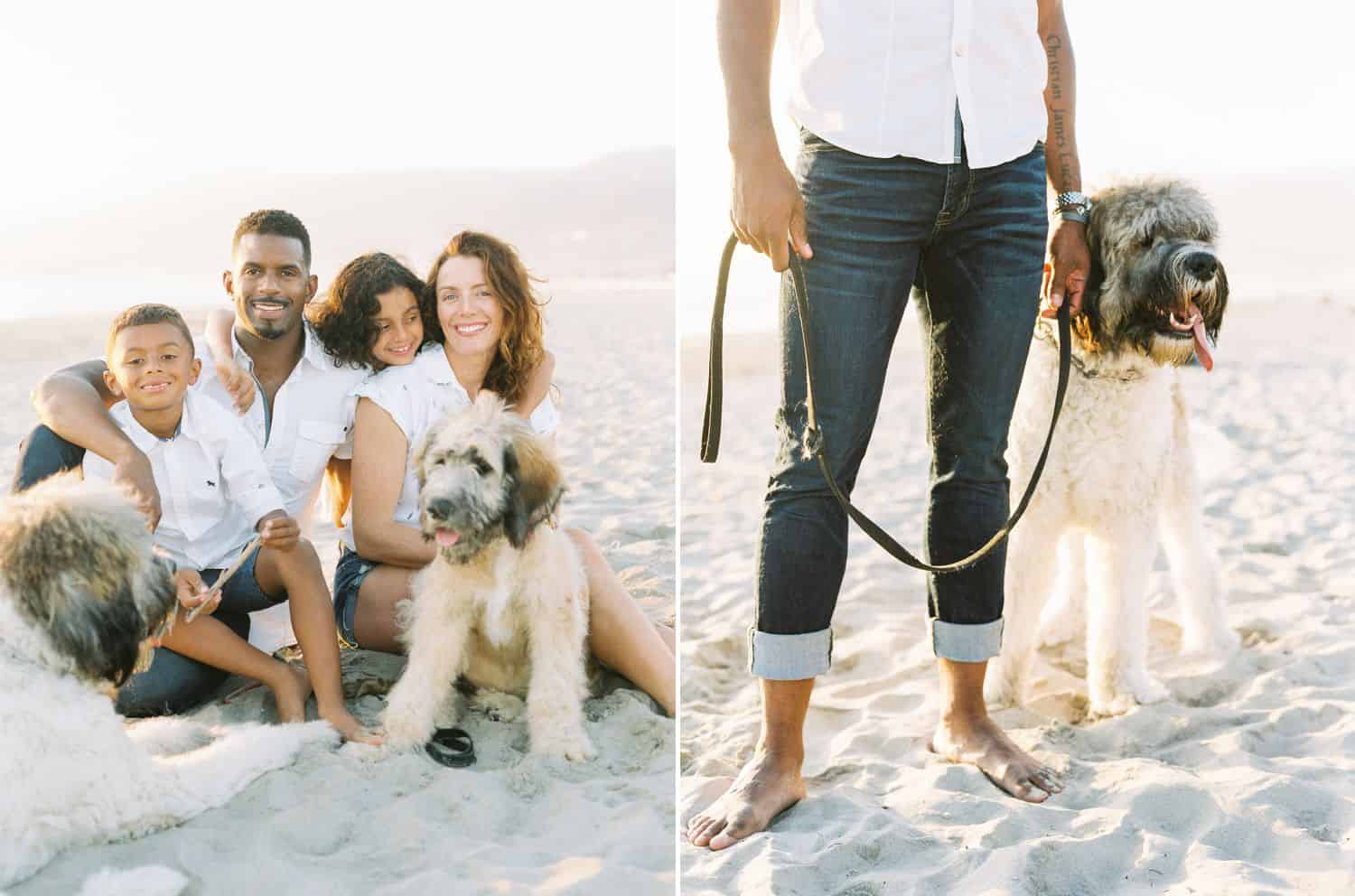
Leila Brewster
Having a solid contract in place can prevent potentially challenging situations before they arise: what happens if your client wants to cancel their engagement session at the last minute? Do you specifically outline when this is acceptable? Do you retain the deposit if someone (gulp) cancels on you and goes with another wedding photographer?
When touchy things happen (and they will!), you’ll rest easy knowing you have a legal contract in place that backs up how you operate your photography business.
Without a signed contract, sticky situations with clients literally become a game of “he said/she said” with the possibility of your reputation and photography business taking a hit. Your photography business is going to feel like your baby, and you don’t want anything to happen to it that easily could have been prevented with a contract.
Now that we’re living in a world that is hyper-aware of pandemic possibilities, you’d be smart to have a specific waiver and release of liability in place. This waiver spells out exactly what your client can expect in terms of pandemic precautions and also insulates you from legal action down the line should anyone become ill after working with you immediately before, during, or after a photography session.
Getting Technical: What You Need to Get Started
So, what exactly do you need to start a photography business? The most basic items include:
- A good camera. Cost will be a big factor when choosing between a crop sensor or a full-frame body. Do your research so you can narrow down the models that will work best for you.
- Lenses. Will you use primes or zoom lenses to take pictures? Some like a mix of both, while others clearly prefer one kind over the other.
- Lighting. No matter which genre appeals to you, a pop-up flash isn’t going to cut it. Will your style require complicated lighting gear, or would a removable on-camera flash do the job?
- A camera bag. The function will likely take priority over style here because you want something that will help you comfortably manage the weight of your gear and keep everything inside safe.
- A computer that can accommodate photo editing software. Will you edit on the go where a laptop makes sense, or is a desktop better for you? You’ll also need a setup that will allow for a solid backup system so you never experience the heartbreak of losing a client’s edited photos!
- Photo editing software. Most use Adobe Lightroom or Photoshop, or even a mix of both. You’ll want to budget for an Adobe Creative Cloud membership or purchase a similar editing program.
- Studio management software. You’ll need a platform that can deliver contracts and accept payment at a minimum. Some programs can also help you manage your workflow through auto-scheduled email and invoice templates.
- Photo gallery delivery service. ShootProof is a fantastic option even for beginner professional photographers, with a free plan for up to 100 photos, along with paid options to fit any budget.

Andrea Gallucci
Invest in Education First
Everything you need to know about how to start a photography business is available online. Hands down, investing in business education is the best advice for new photographers who want to become entrepreneurs.
Mastering the business side of your photography business is critical to your future success. Online and in-person courses help you learn about marketing, accounting, managing social media, blogging, advertising, and more.
And if you’re looking for a real-life learning experience, you can always attend a live retreat or find a pro you admire who offers one-on-one mentoring.
Set a solid foundation for yourself by understanding general photography business best practices, and you’ll likely thrive much sooner than if you don’t.
How to Start a Photography Business Legally
Depending on where you live, there might be some additional requirements in order to establish your business legally, but, in short, you’ll want to check the following boxes:
- Decide on a name and ensure it’s not already in use or trademarked elsewhere.
- Choose between sole proprietorship or an LLC to protect your photography business and personal assets.
- Establish your Employer Identification Number (EIN) through the IRS, which will identify your photography business. Depending on where you live, you might also need a State Tax ID number.
- Set up your photography business finances by opening up applicable accounts with your bank.
- Register to pay state sales tax.
- Determine if you need any special licenses or permits to operate in your area. The Small Business Administration website will help if you live in the U.S.
- Price insurance options for your photography business and go with what makes the most sense for your situation.
- Purchase contracts, model releases and any applicable waivers
While establishing yourself legally may feel like a lot of work, these steps are essential for the future of your biz!
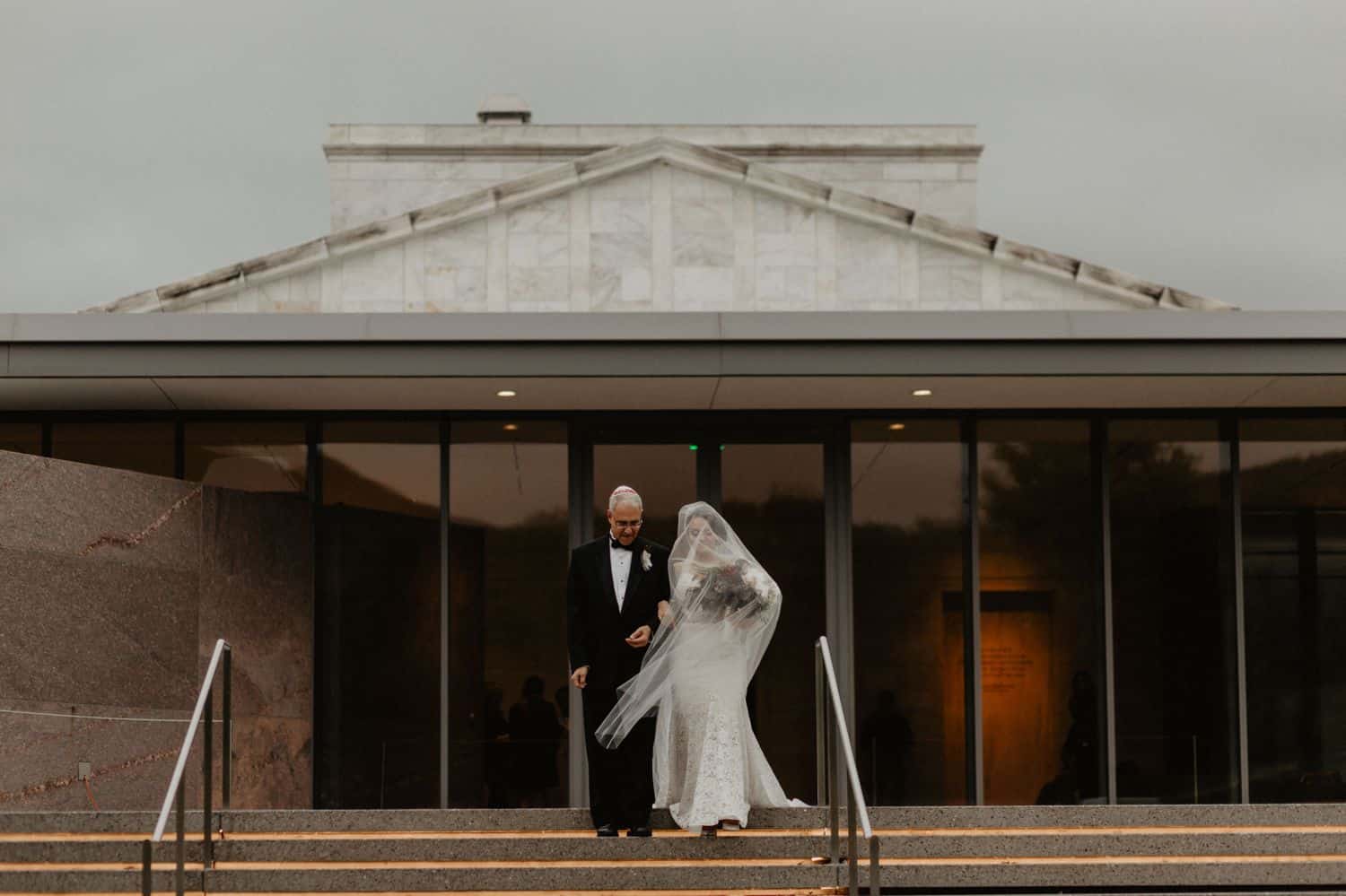
Nicole Nero Studio
You Need Structure to Function
When you’re in the planning phase of being your own boss, much of it sounds like a dream: you don’t answer to anyone, and you’re free to set your own schedule.
The truth is, any photographer must think about their photography as a business—not a hobby.
It takes structure and discipline when you’re starting your photography business. You’ll likely find that, particularly in the first few years, you’ll hustle harder and longer for yourself than if you were employed by someone else.
Give your photography business the respect it deserves by setting a proper schedule for yourself. Many photographers don’t have traditional nine-to-five schedules because we often serve clients in the evenings or on weekends.
No matter what your day-to-day looks like, set a routine for yourself. A photographer can’t pay the bills if they spend all day on the couch watching Netflix!
3 Costly Mistakes Most New Photographers Make
Let’s cover a few mistakes that you’ll want to avoid.
Mistake #1: They fail to set and anchor prices.
Deciding what to charge is a challenge when you’re starting out. You want to set a price that is worthy of your time and effort, keeping in mind what’s reasonable for your area. Just because you haven’t been in business long doesn’t mean you should charge a super low rate.
Practically speaking, you want to evaluate the other professionals in your area and note the average price for a specific service. What’s the high end for your genre and specific type of session? What is the low end? How long have they been in business? Are they specialists or generalists?
You’ll want to consider your confidence level; are you comfortable with posing people and reacting on the fly when clients request a specific kind of photo? Do unpredictable lighting situations throw you off easily?
Carefully consider your answers to these questions in order to set and anchor your prices. It’s perfectly ok to adjust what you charge as you go; as your popularity grows, you’ll be able to raise your prices as clients fall in love with you and your talent!
The last thing you want to do is pull a number out of the air and charge that because it sounds good or it’s what another person in your town is charging. Back up your session fee by justifying the cost of running a photography business. Take into consideration your overhead, cost of goods, cost of time and labor, and desired profit. All of these factors can help you arrive at a reasonable price for your photography services.
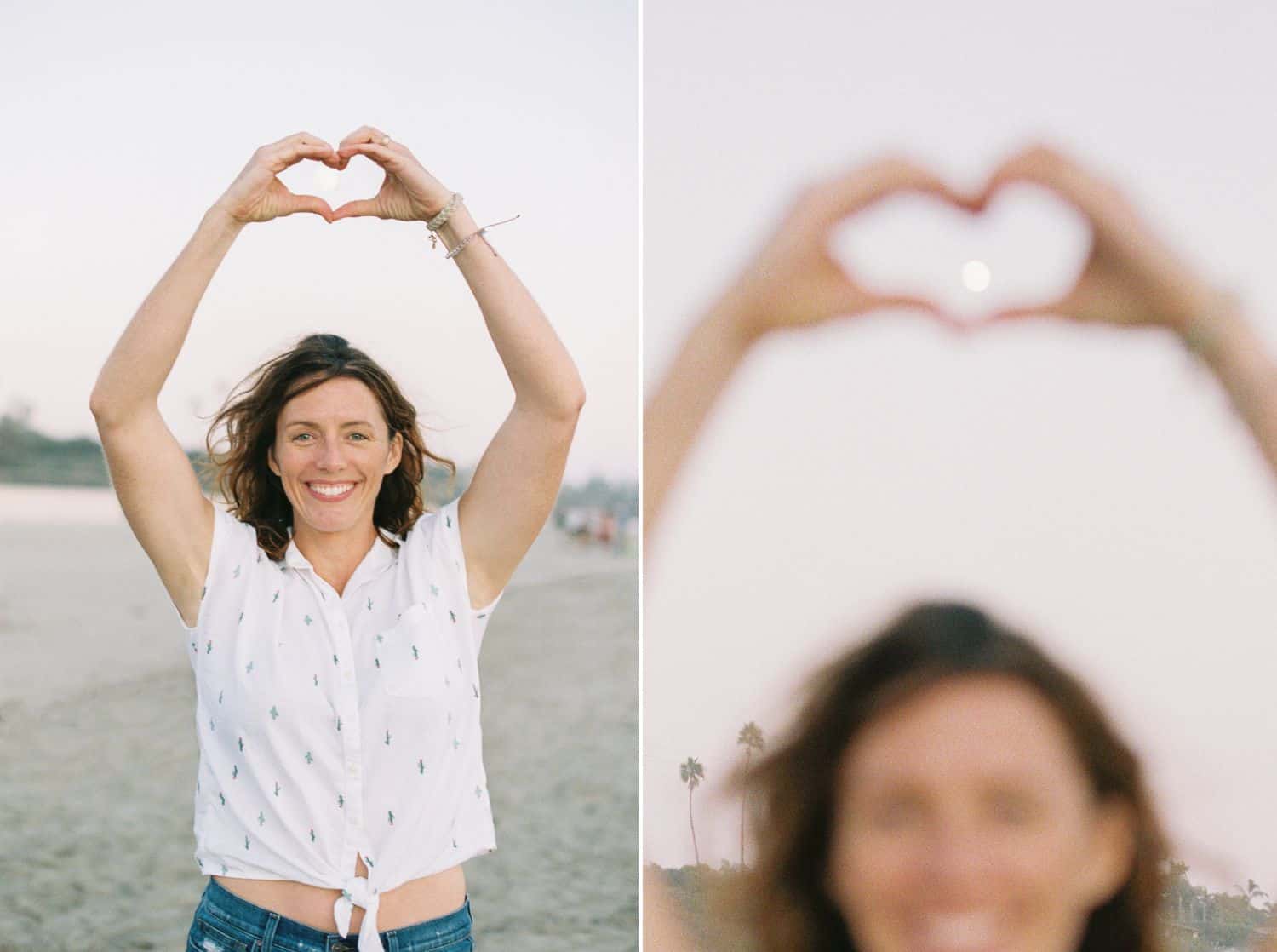
Leila Brewster
Don’t forget: you can also bring in money by offering products like prints, albums, canvases, and photo gifts. Research professional photo labs and find one or two whose work you stand by; after all, these are the keepsakes that will display your work in clients’ homes! Review what those labs charge for the products you want to offer and figure out what you need to add to that amount to make a profit.
Mistake #2: They don’t embrace content marketing.
If you’re in this for the long haul with your photography business, it’s not enough to simply post photos to a social media account or two. Instead, you’ll need a website where people can learn more about you and your work. Most importantly, you need a blog.
A blog is a perfect way for a photographer to showcase beautiful photos and their expertise as an artist who makes photos. With experience, any photographer will find it simple to advise people on what to wear or suggest a variety of locations for the perfect session. Draw potential clients to your website by establishing yourself as an expert photographer in your genre or specialty through your blog.
The goal is to generate interest in what you offer as a photographer—beautiful photography—without explicitly promoting yourself over and over.
In other words, blog content should feature your photography expertise without you being your own obnoxious cheerleader. Content marketing isn’t about bragging on yourself—let your art do the talking there; instead, demonstrate expertise as a photographer on a variety of subjects related to your genre.
While regular blogging can be a significant time investment, it’s well worth it. Google tends to rank frequently updated websites higher, which puts your name and contact information in front of more potential clients!
Content marketing is also important for photographers because so much of what’s on our websites is visual. The problem is, Google needs words to more fully understand what your website is all about so that it can return the best search results for a particular query. As you publish blog posts, search engines will learn when your website should be included in results for certain keywords.
The more wonderfully written, engaging, valuable content you produce, the better your chance of ranking on page one for your keywords!

Andrea Gallucci
Mistake #3: They use the “free shoot” incorrectly.
When you’re just starting, offering sessions at no cost to kickstart your portfolio makes sense.
But free sessions shouldn’t make you wish you had never picked up a camera in the first place. Unfortunately, this is a situation far too many find themselves in because they don’t set proper boundaries regarding no-cost sessions.
Remembering that your time and talent are valuable is crucial when you’re not charging for a session so that you don’t feel taken advantage of. You can easily build a portfolio by offering free sessions without the headache of making use of smart boundaries.
Here’s how this could look:
- The session is free, with a reasonable fee for prints, digital images, or other products.
- The session and a certain number of images are at no cost, but the digitals are sized for posting online only and watermarked. Prints are extra!
- No-cost sessions are reserved only for people with social media accounts; part of the contract requires them to tag your business in any images they post.
- The photo opportunity is limited to immediate family only and is only 30 minutes in length.
- There are no reschedules allowed, so clients can’t cancel at the last minute without losing out on the opportunity.
Without exception, you should have everyone sign a model release giving you permission to use the images for your business.
Also, keep in mind that it’s not just brand new photographers who occasionally offer no-cost sessions; established pros occasionally do too, when they’re experimenting with a different location, lens, camera body or technique.
There are sensible, valuable ways for you to benefit from free sessions as long as you are purposeful in setting guidelines for the people you serve.
The 6 Stages of Starting and Growing Your Photography Business
Here’s your roadmap!
Think of the following six stages as your photography business roadmap. Launching any kind of business is going to look different for every budding entrepreneur, but you’ll want to check the majority of these boxes. It’s important to lay a solid foundation for yourself at the beginning, even though it’s tempting to throw yourself into photography and skip all the initial hard work!
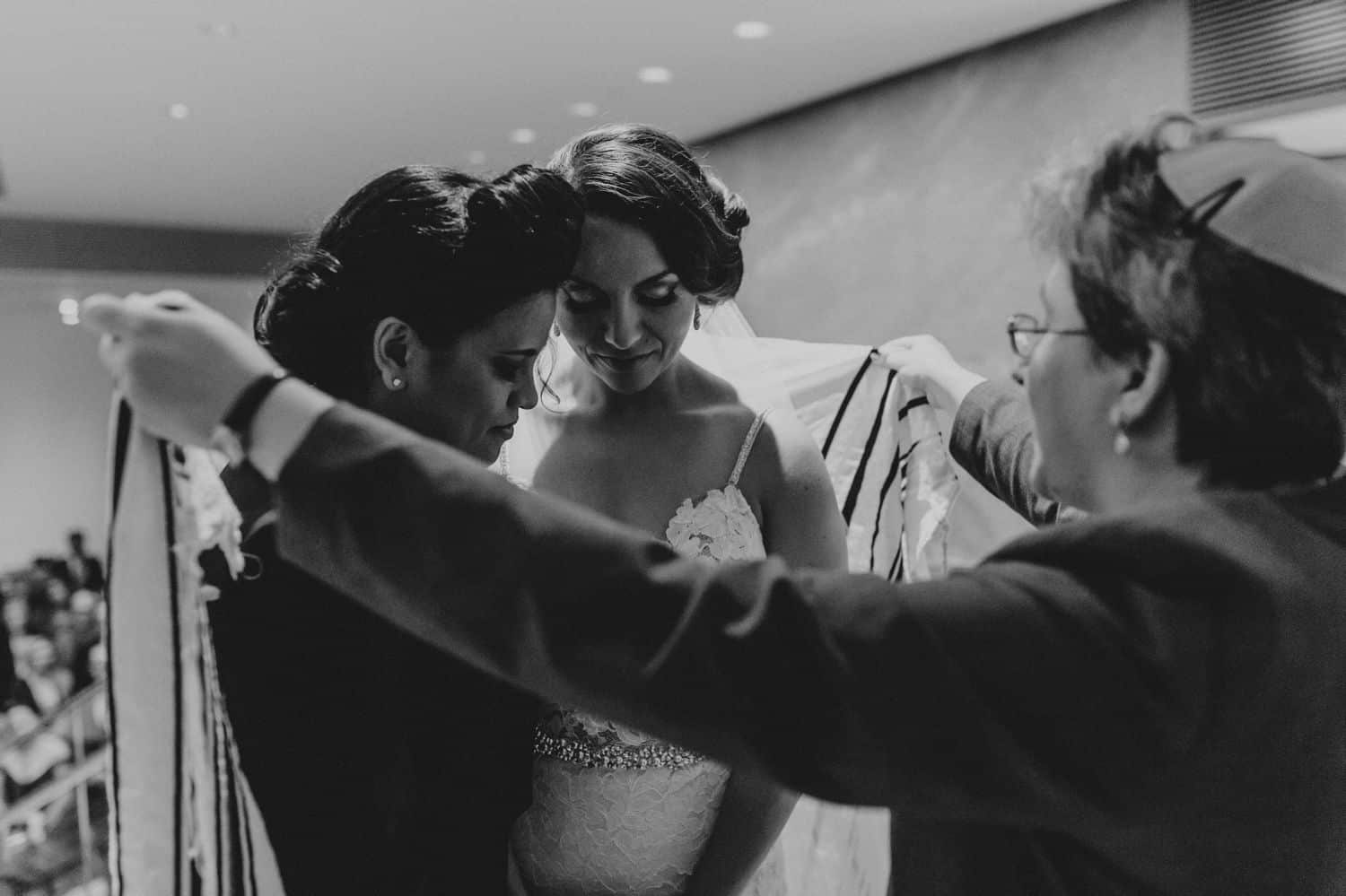
Nicole Nero Studio
Stage #1: Just Starting Out
You’ve probably heard it said that the best job is one that doesn’t feel like work—and that couldn’t be more true! Settling on a genre of photography that excites you is super important because growing your business is full of ups and downs. If you love what you do, you’ll keep moving forward, even during hard seasons.
It’s also important to know what you don’t like; sometimes, you only learn that through trial and error. Maybe shooting wedding photography sounds like the perfect fit for you, but you’d be wise to second or third-shoot one before you throw yourself into wedding photography and brand yourself as a professional wedding photographer!
When you start, it’s the perfect time to figure out where you want to focus—literally. Try out lots of genres, experiment with different lighting situations, and play around with a variety of editing styles.
Stage #2: Photography Side Hustle
As artists, many of us would be content to take beautiful photos without ever making a dime—but that doesn’t pay the bills! Before your business can fully support you financially, you might have to consider different ways to make money with your photo skills.
Get started with ShootProof
Taking Pictures for Clients
This is the most obvious option! Keep in mind there are seasons when particular genres of photography are more sought after. For example, many parents look for family photographers around the holidays and in the spring. Senior photography sessions are scheduled during the fall and early spring; July, August, and December are the most popular months to get engaged.
Keep your eye on the calendar when experimenting with an unfamiliar genre for an idea of who might be looking for your skills!
Teaching Photography
Even if you’re new to professional photography, there are still valuable things you can teach in person or online! Some people learn better in person, so consider mentoring someone else who isn’t as comfortable with their camera. Or, if you’ve developed a few signature Lightroom presets, consider teaching a webinar about your editing techniques.
Selling Your Photos
You may not have clients vying for spots on your calendar just yet, but the images on your hard drive could be more than you think! Think about all of the companies that utilize high-quality photography for business purposes, from large corporations to mom-and-pop shops.
You can sell photos on your own website, which puts you in complete control of pricing and how the images are used. Or, you can partner with sites like Adobe Stock and Shutterstock to make money with your photos!
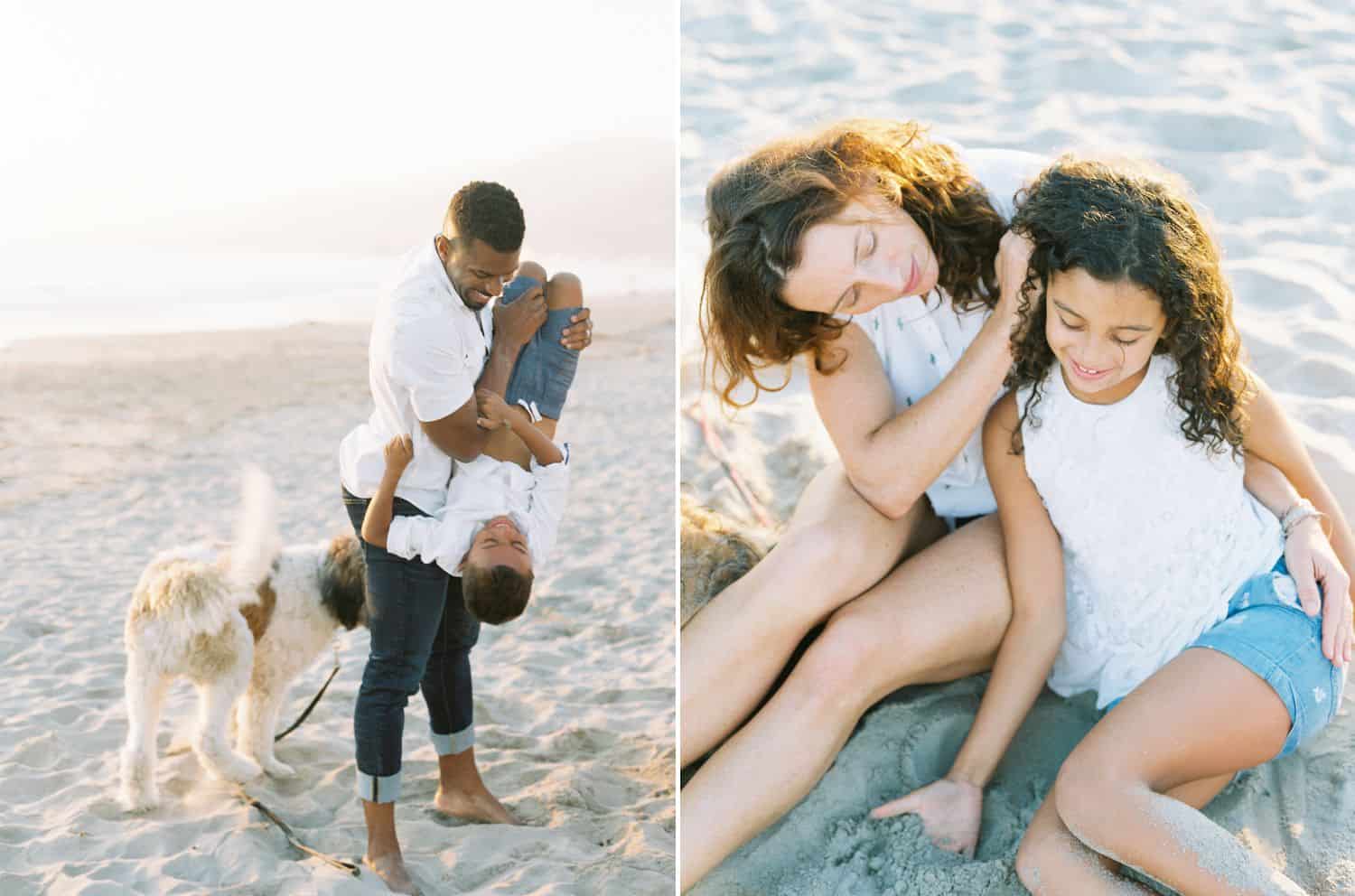
Leila Brewster
Stage #3: Starting Your Photo Biz!
You’ve done quite a lot to get to this point, on top of mastering your camera and lenses! Now, it’s time to draft a simple business plan to keep you on track. Don’t get overwhelmed with this step; your business plan can be as simple as the following:
- Business name. Consider a name that’s easy to say and spell!
- Your audience. Who are you going to photograph? What kind of person is your ideal client?
- Services and prices. Will you be a generalist who photographs everything or a specialist in a certain niche? Do you want to work with many clients per month or just a few?
- Your goals. Whether financial, technical or personal, set a benchmark for yourself so you can assess your progress along the way.
- Time commitment. If you have a regular nine-to-five job or you’re juggling children at home, set a reasonable goal. As your business grows, you’ll naturally do more—you don’t have to tackle it all at the beginning!
- Financial resources and costs. You need to know where the money will come from to fund your business until it’s making money.
A business plan is helpful in decision-making as you grow. Whether you’re developing your marketing plan or dreaming up mini-session ideas, every action you take should circle back to your business plan. You can adjust this business plan as you grow, but those changes should be made carefully to maintain consistency in your business and brand.
How to Pick the Right Equipment
If you’re overwhelmed with the thought of selecting the right camera and lenses, take a deep breath. Yes, almost endless options are available—and that’s a good thing! No matter what kind of photography you love, there is a camera out there for you!
Here’s an overview of important camera features:
Perhaps your biggest decision is between a DSLR vs. a mirrorless camera. DSLRs have been around much longer. They use a mirror inside the body to reflect light through the lens and into your viewfinder. Light passes through the lens and onto the image sensor with a mirrorless camera, just like on your iPhone.
Which option is better? Both allow you to change lenses, although there are more options for DSLR bodies. The DSLR body is bigger and heavier, which might affect your decision. Ultimately, this is a personal decision. You can always rent a few camera bodies to find the one you like the most.

Andrea Gallucci
A megapixel is one million pixels; this is important because camera resolution is typically measured in megapixels. Simply put, more megapixels give you more detail in photos, but it also equals bigger files.
There are a variety of opinions out there about whether more megapixels equals better photos. It’s pretty safe to assume cameras manufactured in the last couple of years should deliver beautiful photos full of detail as you’re just starting a photography business. You can always upgrade later.
Aperture measures the size of a lens opening. Think about the aperture of a lens like the pupil in your eye. Your pupil enlarges to let in more light, just as you can increase the aperture of a lens to access more light. As you let in more light, the aperture setting decreases. You might also see aperture referred to as the f-stop.
Aperture also controls the depth of field, or zone of sharpness, in an image. When you see a photo with a creamy, blurry background, the photographer used a low aperture number to draw attention to a narrow area. A wide open aperture like 1.4 would give you a very narrow depth of field, meaning only a tiny area is perfectly in focus. Conversely, an aperture of 5.6 would yield a much larger area of focus.
Get clients. Get paid. Get happy.
Shutter speed refers to the length of time the shutter is open. It’s measured in seconds or fractions of a second. A shutter speed of 1/50 is closing at a slow rate, while 1/2000 is closing very quickly. You’d use a fast shutter speed in sports photography to capture the action. A long shutter speed helps show motion, such as photographing speeding cars on a race track.
Some cameras offer in-body image stabilization, which helps ensure a crisp image when you might not have enough light to allow for a fast shutter speed. This feature might come in handy at sunrise, sunset or if you’re photographing indoors in a dim room. With image stabilization enabled, you won’t have to worry about hand shaking affecting your images in low light.
Another hotly debated topic is between prime (fixed focal length) vs. zoom lenses. Some people clearly prefer one over the other; others use both and select their favorite based on the situation or preferred creative direction.
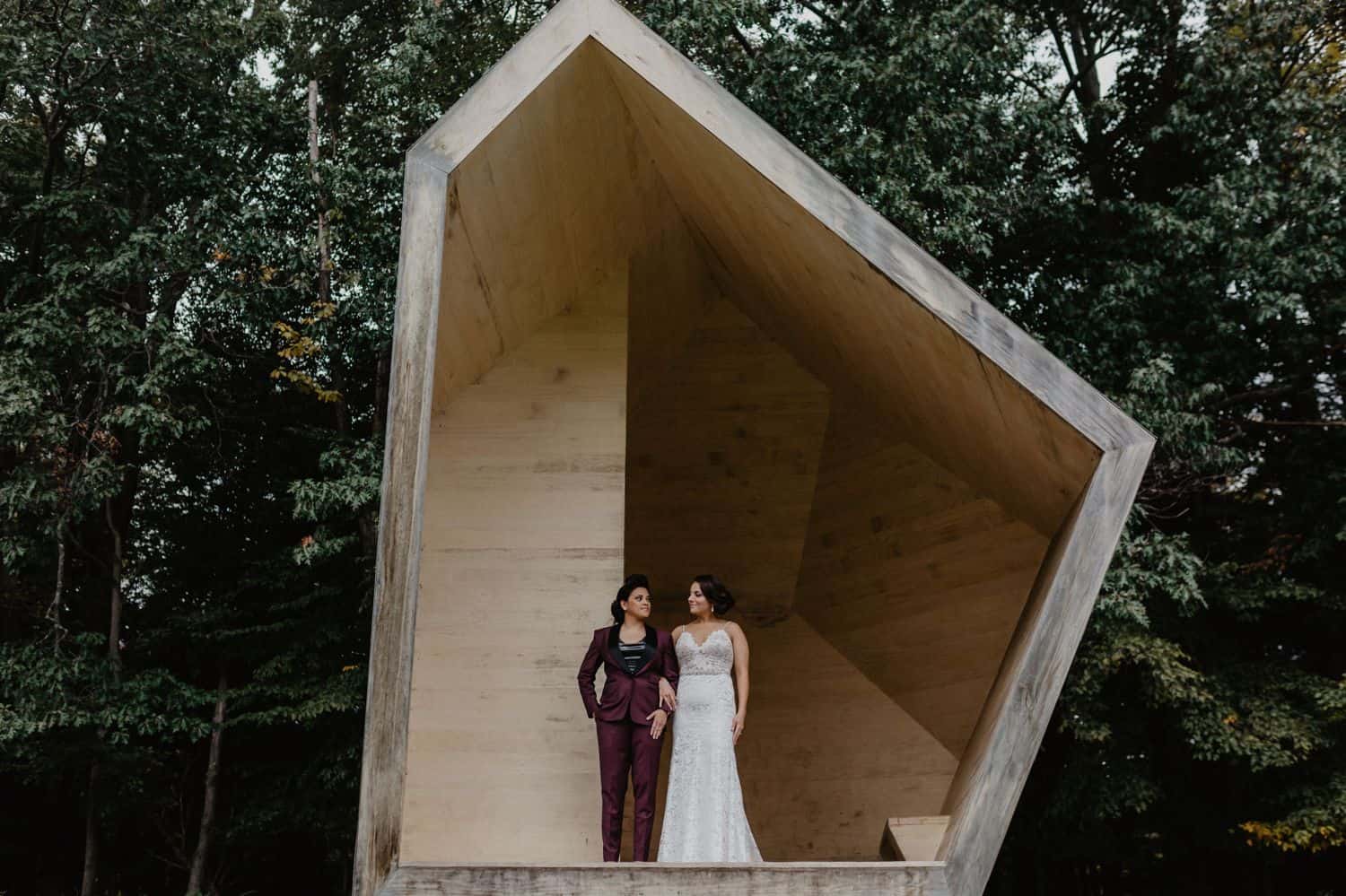
Nicole Nero Studio
Prime lenses, like a 50mm, have a focal length that cannot be adjusted. You’d “zoom with your feet” using a prime lens, meaning you have to physically move closer to or further away from your subject to adjust what’s in the frame. These lenses often have a wider maximum aperture, which means you can let more light in with a prime lens. That can come in handy if you don’t have access to a lot of light.
The advantage of a zoom lens, like the 24-70mm, is that you don’t have to swap out lenses for an entirely different focal length. Want an up close and a wide shot of your subject? Instead of physically moving yourself, you’d simply adjust the zoom ring. The disadvantage to zoom lenses is cost; they’re often significantly more expensive than primes.
When you’re ready to select your first lens, consider renting a few different zoom and prime lenses before purchasing. This is a budget-friendly way to determine which option works best for you; not only will you get a feel for both kinds of lenses, but you can even narrow down your favorite of both options! Many new photographers fall in love with the “nifty 50″ 50mm when they’re starting a photography business because it’s relatively inexpensive, useful in various situations, and produces lovely images.
Time to cover your business basics!
Let’s cover some basics of how to start your photography business.
Ensure your domain name is available and lock in your business name social media accounts.
This is where brand consistency is especially critical: whatever name you choose should be the same everywhere. For instance, I’ve locked in kristalbeanphotography.com as my domain name; this exact same phrasing carries over to my social media, marketing and advertising materials, business cards, etc. You don’t want to cause confusion by using variations of your small business name in different places!
Claim your Google My Business profile.
Google is the most-used search engine on the planet and they’ll give you a totally free way to get more eyes on your biz by claiming your GMB listing! This is a quick and simple way to share important details about the services you offer, collect reviews, show off photos, and answer FAQs. There is an option to keep your home address invisible if you don’t have a studio, so there’s no reason not to take advantage of this!
Save yourself time by creating templates for everything!
This could include emails, contracts, invoices, quotes, what-to-wear guides, and session timelines. Go the extra mile by setting up email auto-responders for session inquiries; you can BCC yourself as a reminder to follow up with the new lead!
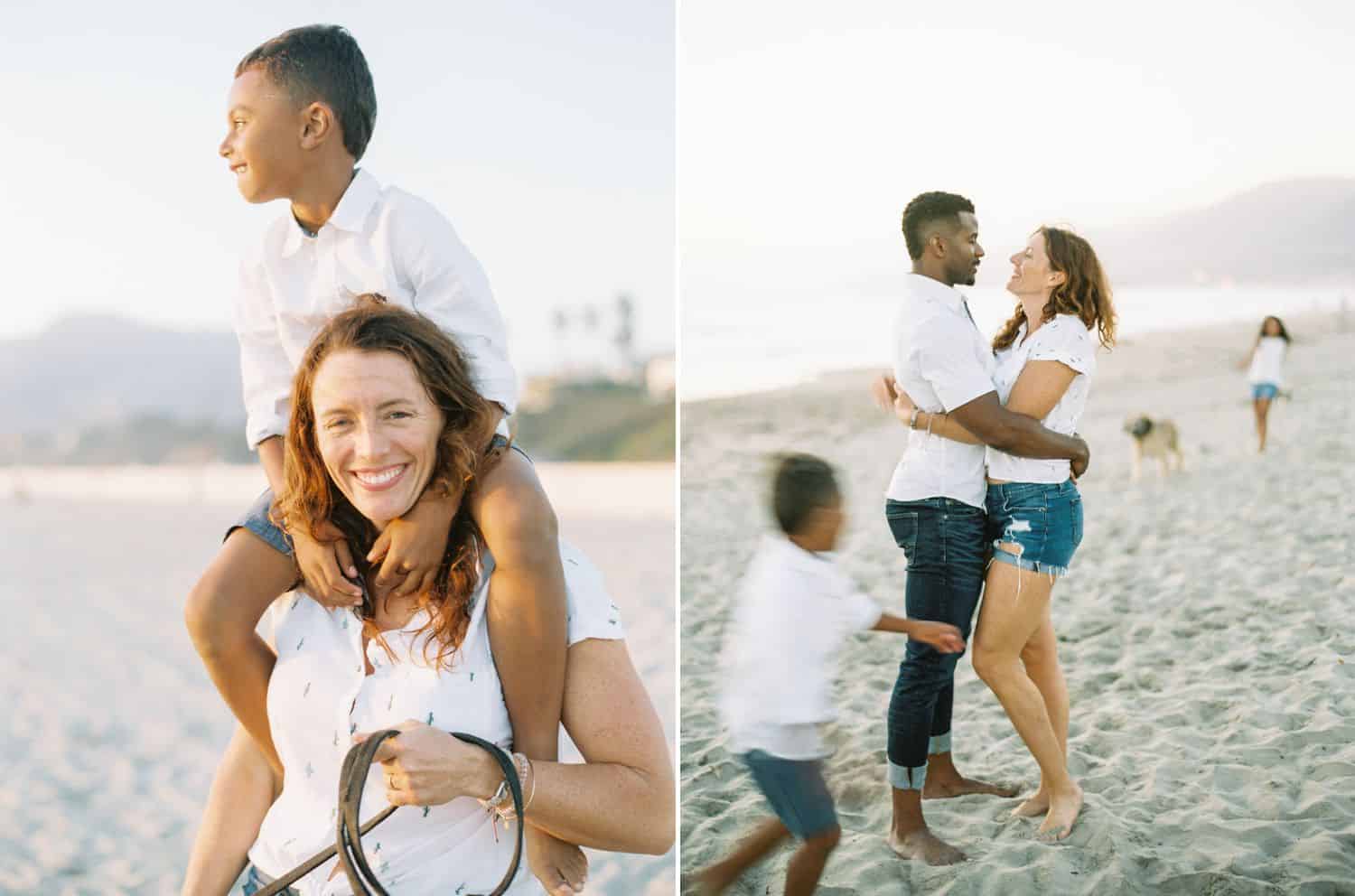
Leila Brewster
Stage #4: Committing to the Success of Your Photo Biz
It’s time to tell the world about your photography business by building your website and portfolio. You can use a platform like WordPress and purchase a good theme that makes it a snap to get your beautiful website up and going.
Make sure your website navigation is simple and intuitive; prospective clients should know what you offer and how to get in touch with you without having to click around too much.
Select only the very best images for your portfolio. This can be challenging as we pour our hearts into our art and often have an emotional connection to our favorite images. Ask someone you trust to help you narrow down your portfolio, and refresh it often so that your best photos are always on display.
Ready, Set, Start Marketing!
Getting your website and portfolio up is only part of the battle; now, you must start sharing your passion for photography with the world!
Use the social media accounts you created to spread the word about your photography business. Try interacting with other businesses that serve the same types of clients you do and making meaningful connections with them! Also, get active with other new businesses in your community. Be genuine and not self-serving; you want to make valuable connections so that your contacts will feel good about referring people to you.
Join groups for photographers and other related audiences. Don’t be afraid to participate in conversations and share your insight. You don’t have to be a pro with 20 years under your belt to give good advice and join in the conversation!
Continue building your portfolio. Show off your latest photos, and don’t shy away from constructive criticism.
Ask for referrals! This isn’t the time to be shy or feel afraid to ask others to tell people about how amazing you are. Whether you’ve offered free or discounted sessions, email those clients and ask them to share your name and website with anyone searching for a photographer.
Under-promise and over-deliver. Delight your clients in big and small ways: promise to deliver their images in two weeks, but get them edited and sent in one. Bring stickers or other parent-approved items to family sessions as rewards for kids. Send your client a handwritten thank you note after the session and include your favorite 4×6 print. These actions will have people buzzing about how thoughtful you are, which will bring in more business!
Collaborate with other small businesses. You can offer to spotlight a local venue on your blog and interview the owner via email for ready-to-publish content for your blog. Or, team up with other local entrepreneurs to offer a big giveaway for an upcoming holiday.
Look for opportunities in your daily life to boost your biz! You can position yourself as the go-to pro on your block or in your apartment complex just by telling people what you do. Keep business cards in your wallet for those occasions when you run into someone who is looking for photo services.
Ask for the sale. It’s not the time to suffer from a lack of self-confidence. You’re the best person to brag about your business! When you have someone interested in scheduling with you, be bold and ask them if they’d like to book.

Andrea Gallucci
Stage #5: Lead Your Team and Scale Your Biz to Hit the Big Time!
When your business has exploded, and you’re doing well enough to bring on associate photographers or other pros to help you connect with more people, take your leadership role seriously. Ensure your brand is consistent and that clients have an incredible experience every time with each person on your team.
Things I Wish I’d Known Before I Got Started
- Learn to shoot in manual mode immediately. This allows you to take complete creative control of your images for better photography. Shooting manually means you can fully harness the power of your camera and lenses.
- Remember, you’re not “just a photographer.” As a small business owner, you’ll wear so many hats: marketing, blogging, webmaster, accounting, customer relations, advertising, editor, album designer… and more! It will take time to develop talent in all these areas—and remember you can always hire others to help.
- Be patient! It’s rare to be an overnight success. You might feel envious of the successful photographers in your area whose calendars are consistently booked with clients. Just keep in mind that person was once in your shoes! There’s a good chance the pros near you who are doing well have been working incredibly hard for years to get to that point. You’ll get there, too!
- People skills are the most important skills. You might have amazing technical skills with your camera, but if you can’t set clients at ease during a session or communicate with an upset client with understanding and grace, your business won’t last.
- Branding is important. Stationary is not. In other words, don’t waste your money on things you won’t use. Letterhead and fancy envelopes are likely at the top of this list, at least at first! Business cards are usually a wise investment, though, for those times when you meet potential clients while you’re out and about.
- Get outside inspiration. You should absolutely look outside your genre—or even photography altogether—for a boost of creativity. It’s also a good idea to have interests beyond photography. After all, there’s more to you than what you do!
- Your email list is crazy valuable. New photographers’ biggest mistake is pouring all their time into social media to connect with people. If Facebook or Instagram disappear tomorrow and that’s the only way you interact with followers, how would you find them again? Start building an email list and consider sending out a regular newsletter. This keeps you top-of-mind with people who expressed interest in you without relying on an outside platform.
- Create off-season income. No matter what you photograph, you’re probably going to run into slower months in the beginning. That’s when you pick up sessions you don’t normally offer or sell your images as stock photography to bring in extra cash.
- Don’t box yourself in. Take risks and be daring; street photography might not sound like something you’d enjoy, but why not give it a try? You may find that you love it!
- Think BIG! Running your business can feel amazing and overwhelming all at the same time. Don’t let fear or insecurity keep you from achieving your photo biz dreams! There’s no reason why you can’t be the most sought-after pro in your area or have your photos hanging on museum walls.
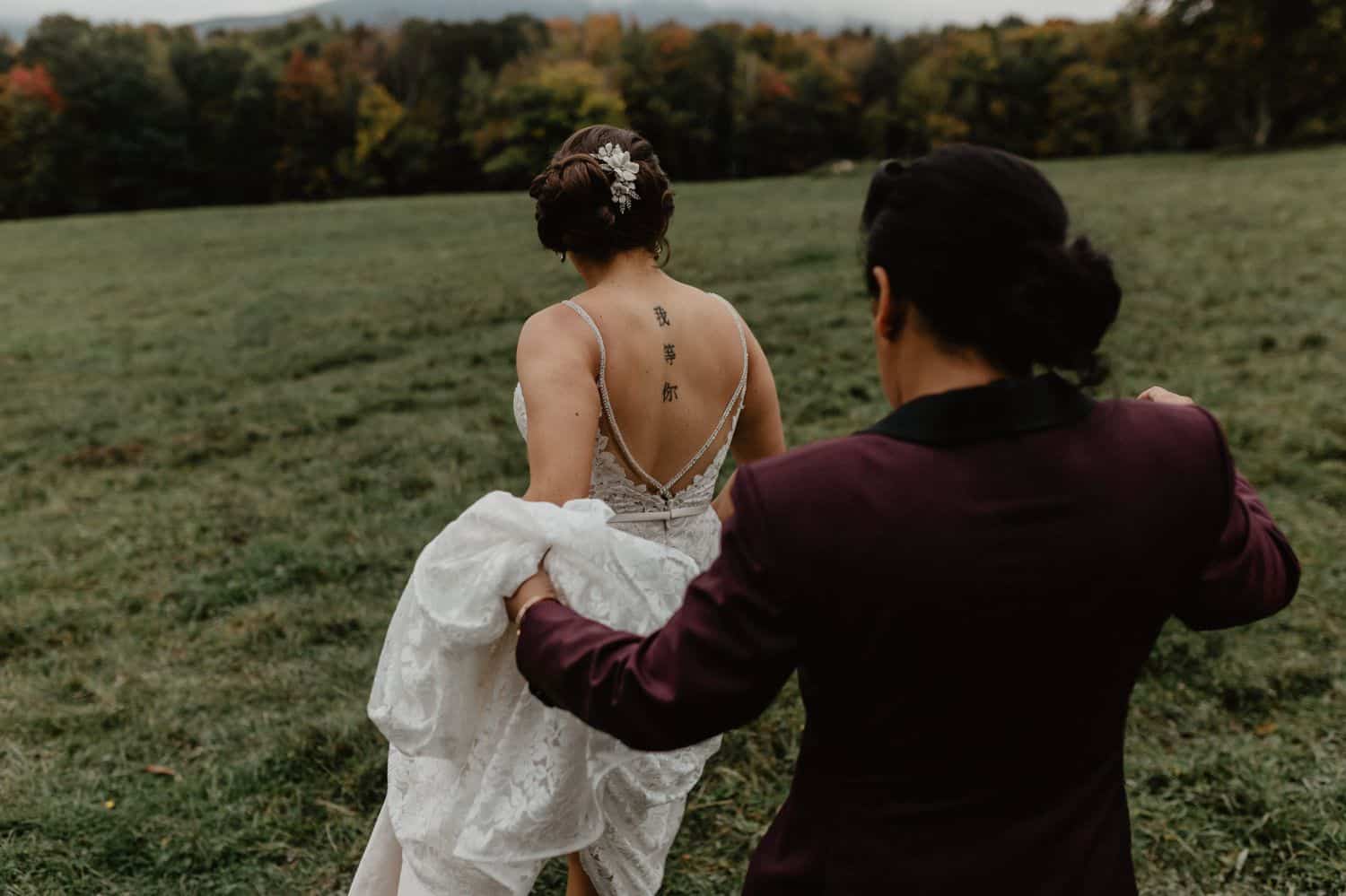
Nicole Nero Studio
Some Final Inspiration and Guidance
All of the professional photographers you admire once stood in your shoes, thinking about what success could look like for them. Now that you’ve got a clear set of directions to follow, get started making your photo business dreams come true!
Start your free trial with ShootProof
Written by KRISTAL BEAN | Photographs by ANDREA GALLUCCI, LEILA BREWSTER, and NICOLE NERO STUDIO
Kristal Bean is a maternity and newborn photographer based in The Woodlands, Texas. Her passion is helping women celebrate the beauty of motherhood with a luxury photography experience. Kristal is married with three young daughters and one goofy golden retriever.

